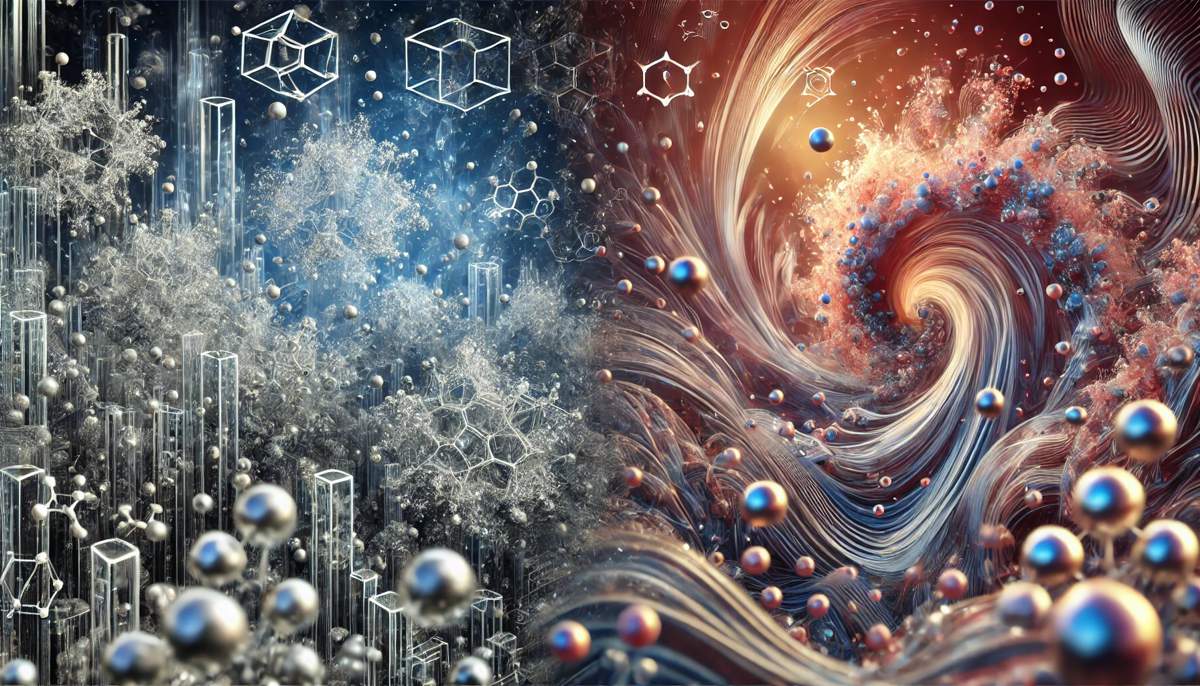The New Wave in Glass and Liquid Science
At first glance, glass and liquids might not seem all that exciting. After all, we interact with them every day—from sipping a glass of water to gazing out of a window. But there’s a whole world beneath the surface, a chaotic dance of atoms that’s been puzzling scientists for centuries.
Enter Takeshi Egami, an esteemed materials scientist who’s made it his life’s work to decipher the mystery of these noncrystalline materials. His ground-breaking research at Oak Ridge National Laboratory (ORNL) and the University of Tennessee, Knoxville (UTK) is rewriting the rulebook on how we understand the atomic structure of liquids and glasses.
Egami’s quest is akin to a modern Copernican revolution in material science. Just as Copernicus challenged the geocentric model of the universe, Egami is shaking up the scientific community’s understanding of glass and liquids by questioning long-held theories and introducing a new model for atomic behaviour.
Breaking Down the Structure
Liquids and glasses have something in common—they lack the orderly, rigid atomic structure of solid materials. In most solids, atoms are arranged in a predictable, lattice-like structure. This structure gives us everything from the solidness of skyscrapers to the clarity of a diamond. But in liquids and glasses, atoms are in constant motion, scattered in a way that seems random, much like tapioca pearls swirling around in a boba tea. It’s this lack of order that makes these materials so fascinating, and so challenging to study.
Egami has spent decades at ORNL and UTK analysing the structure of noncrystalline materials using cutting-edge techniques like neutron scattering and synchrotron X-rays. These powerful tools allow scientists to peer into the atomic world and observe the movement and structure of atoms in real-time. For Egami, the conventional “bottom-up” approach to understanding these materials—starting with individual atoms and building up—is inadequate. “It’s like assuming the Earth is at the centre of the universe,” he says, drawing a parallel to the outdated geocentric model.
Instead, Egami advocates for a broader, more “top-down” approach. This means looking at the material as a whole and understanding how groups of atoms interact over larger distances, something he calls “medium-range order.” This method has led to some astonishing discoveries, including new insights into how liquids and glasses behave on an atomic level.
The Enigma of Metallic Glass
One of the most intriguing materials Egami studies is metallic glass, a substance that looks and behaves like a solid but is technically a supercooled liquid. Metallic glass is made from metal alloys—combinations of different metallic elements—that are rapidly cooled before they have a chance to form a crystalline structure. This gives metallic glass some unusual properties. It’s incredibly strong, elastic, and easy to magnetise, making it a popular material in everything from smartphones to sporting equipment.
However, metallic glass also has its quirks. Despite its strength, it’s surprisingly brittle. Under the wrong conditions, it can shatter like glass. This paradox has baffled scientists for years, but Egami’s research is starting to provide some answers. His work suggests that the structure of metallic glass on a medium-range scale—how atoms are organised over distances larger than a few atomic radii—could hold the key to understanding its mechanical properties.
Metallic glass first entered the marketplace in the 1970s and has since found applications in various industries. Yet, its commercial use remains somewhat limited due to a lack of understanding of its underlying structure. Egami’s findings could pave the way for new applications, potentially revolutionising industries that rely on strong, lightweight materials.
A New Theory – The Density Wave
In 2017, Egami and his team made a significant breakthrough using synchrotron X-rays at Japan’s SPring-8 facility. For the first time, they observed dynamic atomic correlations in water—essentially, they were able to see how the movement of one atom influences its neighbours. This was a game-changer, as no one had ever directly observed these correlations before. The implications of this discovery extend far beyond water, offering new ways to study the behaviour of atoms in other liquids and glasses.
Building on this, Egami and his team proposed a new theory based on the idea of a “density wave.” This theory suggests that the atoms in noncrystalline materials aren’t just randomly jostling around; instead, they form waves, or ripples, of density that can be detected over medium-range distances. In other words, the chaos of a liquid or glass might not be as chaotic as it seems. There’s a hidden order beneath the surface, and understanding it could unlock new ways to manipulate these materials.
Egami’s density wave theory is still in its early stages, but it’s already turning heads in the scientific community. In 2022, Egami and UTK’s Chae Woo Ryu published a paper that confirmed the existence of these ripples in metallic glass. Their findings suggest that these density waves could explain some of the material’s unusual properties, like its brittleness and strength. This new understanding of medium-range order in liquids and glasses could have far-reaching implications for industries that rely on these materials.
A Global Impact
Egami’s work is funded by the U.S. Department of Energy’s Office of Basic Energy Sciences, and his research primarily relies on the Spallation Neutron Source, a world-class facility at ORNL. But his impact extends far beyond the walls of the lab. Egami has spent much of his career challenging established ideas and introducing new ways of thinking about atomic structure. His previous work on disordered crystals, detailed in his book Underneath the Bragg Peaks, was initially met with resistance but eventually became a standard method in the field. Now, he’s on a mission to do the same with his density wave theory.
Egami is also taking his findings on the road, giving talks and lectures to scientific communities around the world. While he knows that acceptance of his ideas may take time, he’s confident that his theory will gain traction sooner rather than later. “It’s not my first rodeo,” Egami says, reflecting on his past experiences with sceptical colleagues.
A Bright Future for Glass and Liquid Science
Egami’s work represents a new frontier in material science. By challenging conventional methods and introducing innovative ways to study the atomic structure of noncrystalline materials, he’s opening up new possibilities for industries that rely on glass, liquids, and metallic materials. From smartphones to medical devices, the potential applications of his research are vast.
As the scientific community begins to embrace Egami’s density wave theory, the future looks bright for the field of liquid and glass science. With each new discovery, we’re getting closer to unlocking the secrets of these mysterious materials, paving the way for new technologies and innovations.




















